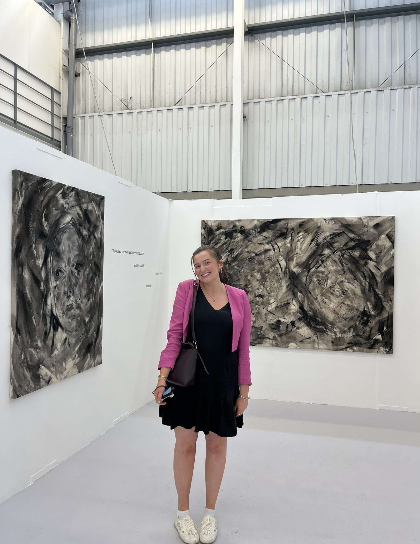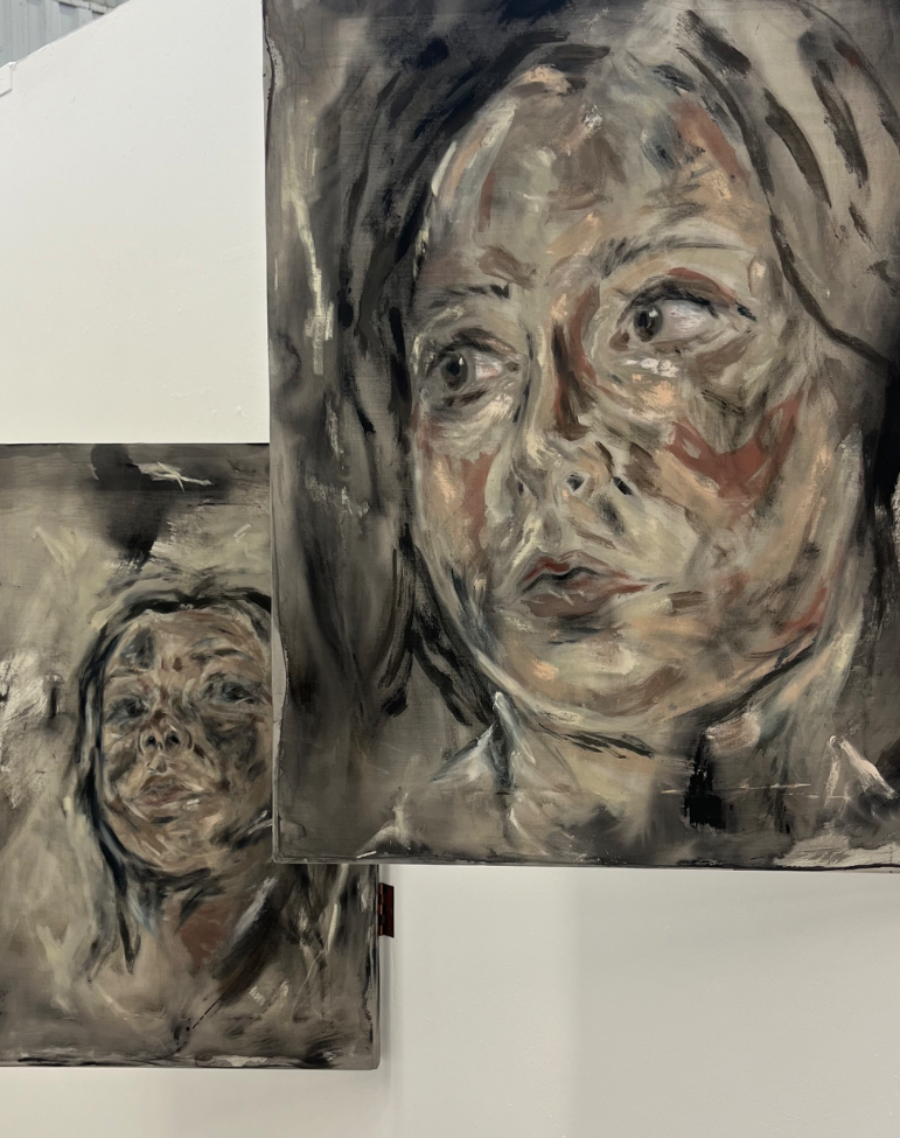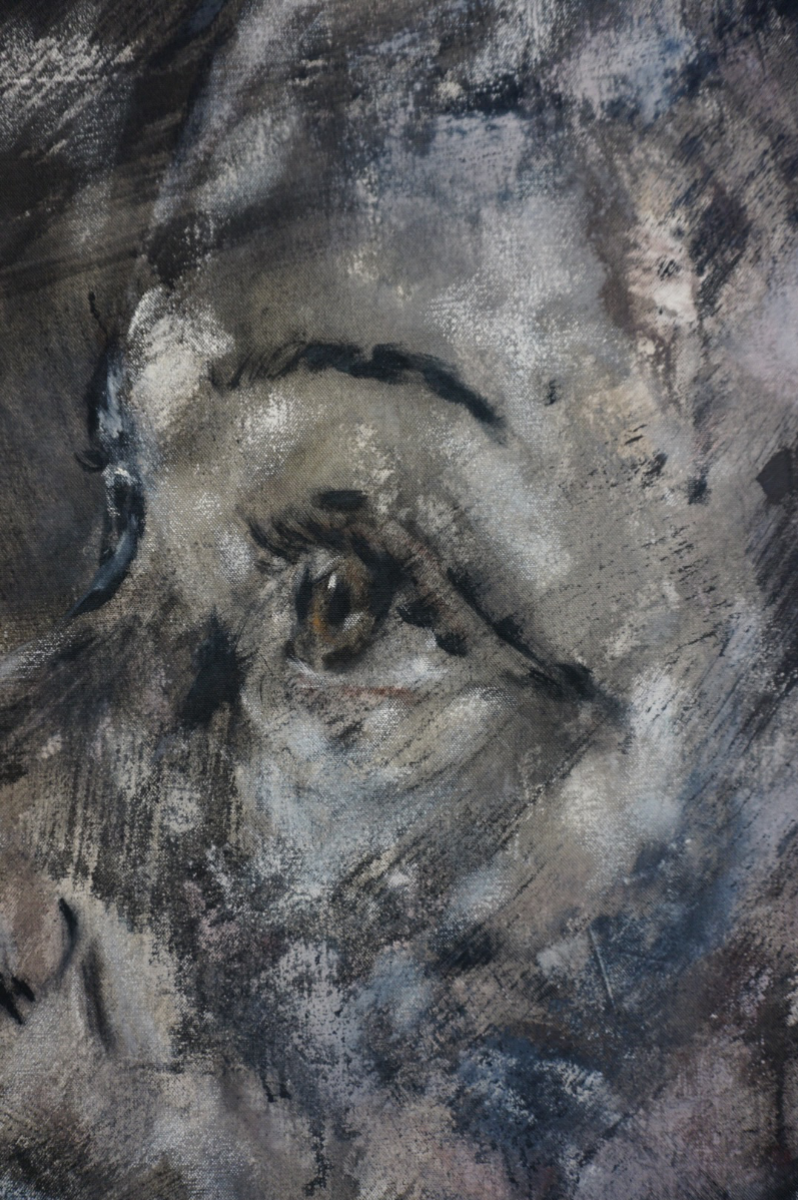Emily Sweeney
Fine Art BA Hons
Loughborough University
Graduates: 2024
Specialisms: Fine Art / Painting / Art Curation
My location: Somerset, United Kingdom


Emily Sweeney

First Name: Emily
Last Name: Sweeney
University / College: Loughborough University
Course / Program: Fine Art BA Hons
Graduates: 2024
Specialisms: Fine Art / Painting / Art Curation
My Location: Somerset, United Kingdom
Website: Click To See Website
About
This exhibition comprises of introspective self-portraits, aimed at communicating the feeling of being ‘other’ to oneself. This is primarily influenced by the artist’s lived experience of pre-menstrual dysphoric disorder (PMDD). Feeling ‘separate’ or ‘other’ to oneself is a notion I have explored heavily through psychoanalytic research. I have found that the othering which occurs within my psyche is replicated in the separation between the artist and viewer. Art is, “essentially the internal made external” a “combined product… [of] thoughts and feelings” (Abrams, 1953, p.22 in Spitz, 1983, p.29). Ellen Handler Spitz suggests that an outcome in art, is the summation of its original intention, and the thoughts that occur during its process. Therefore, there is a distinct difference between what I, the artist, intend to create, and what is received by the viewer. Subsequently I have adopted a process of creation that is an amalgamation of choice and chance. Influenced by the features of Disrupted Realism, “a subjective approach to painting that favours perception over seeing and embraces subjectivity” (Seed and Stanek, 2019, p.15), I paint images of myself that go “beyond mere appearances” allowing the creation of “imagery that deals with psychological and emotional narratives” (Seed and Stanek, 2019, p.75). First, dark expressive marks are applied, the canvas is then flipped, and the portrait itself is painted on its clean reverse. By flipping the canvas, I am separated from the final outcome. I choose diluted paint, allowing it to bleed through the material, but it is out of my control how much resemblance will seep through to form the final image that erupts from the expressive background marks. This process results in a two-sided canvas, by displaying the work fixed to the wall, with the ‘bled through’ side showing, I remove the knowledge of its intricate process from the viewer. Furthering this, “empirically speaking, when we ask participants to introspect, all that we can garner is what they are meta conscious of (i.e. what they believe they are experiencing” (Schooler and Schreiber, 2004, p.19). This notion of the paradox of introspection can be applied to the viewing of my art, one knows everything, and yet nothing. The psyche is “compelling yet elusive” (Schooler and Schreiber, 2004, p.17). This notion has influenced the curation of my exhibit greatly. Amongst the conventional means of display using mirror plates, I display two works as interactive ‘hinged’ pieces, that open out to grant the viewer the ability to see both sides. This answers none of their questions specifically, yet reveals everything. Here my exhibit is a paradox, the viewer is represented with ‘everything’ (the completed piece) and yet nothing (having no empirical evidence of its involved creative process). This encourages the re-examination of the other displayed works, are they created in the same way? Is this ‘other side’ accessible too? Here I have othered myself during the creation of the work, and the viewer in their new understanding of the hinged work with its two sides. Thus this is not only a paradox of introspection, but a paradox of viewing art. It is the artist’s hope that seeing 'The Paradox of Introspection' opens a facet to perceive the mental discomfort of othering, that to an extent, we can all experience: one may find solace in this.
Competitions















